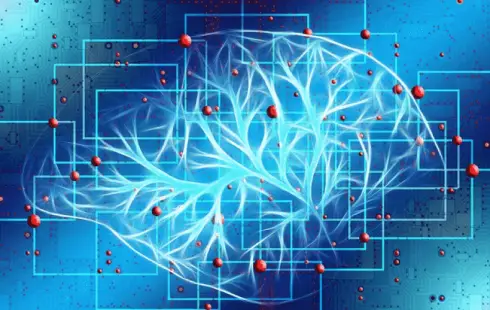
Ukrainian Diplomat Calls for Stronger Security Commitments Beyond NATO-Style Guarantees
Section: Politics
 Measuring the activity of the human brain on a cell-by-cell basis was previously only possible to a very limited extent. Researchers at Klinikum Rechts der Isar at the Technical University of Munich (TUM) have developed an approach that makes this much easier. They rely on microelectrodes and the support of brain tumor patients: During waking surgeries, they take part in studies. The team was thus able to show how our brain processes numbers.
Measuring the activity of the human brain on a cell-by-cell basis was previously only possible to a very limited extent. Researchers at Klinikum Rechts der Isar at the Technical University of Munich (TUM) have developed an approach that makes this much easier. They rely on microelectrodes and the support of brain tumor patients: During waking surgeries, they take part in studies. The team was thus able to show how our brain processes numbers.
We think about numbers every day. On the one hand, this happens in a very concrete way - when we count objects. On the other hand, it happens abstractly, for example when we perceive the written symbol "8" or solve more complex arithmetic problems.
In a study published in the specialist journal Cell Reports, a team of researchers and doctors led by Simon Jacob, Professor of Translational Neurotechnology at the Department of Neurosurgery at the Klinikum Rechts der Isar, University Hospital of TUM, was able to show how the brain processes numbers. The researchers demonstrated that in the brains of test subjects, individual neurons were specialized for specific numbers. They were particularly active when the brain perceived a certain number of elements in a point cloud. To a somewhat lesser extent, this was also true when number symbols are shown.
"We already knew that animals process numbers in this way," says Simon Jacob. "How this happens in humans has not yet been clearly demonstrated. We are one step closer to decoding the codes of thought and, for example, to developing solutions if these brain tasks are disrupted."
Measuring individual neurons is a challenge
In order to arrive at this result, Jacob and his team first had to solve a fundamental problem. "The brain works via electrical impulses," says Simon Jacob. "That's why we learn the most about thinking and perception when we measure these signals directly."
However, there are few opportunities to directly measure human brain activity. The neurons cannot be read through the skullcap. Some teams use surgeries to insert electrodes for epilepsy. In these methods, however, the brain region assumed to be responsible for processing numbers is not reached.
Established approaches further developed
Simon Jacob and an interdisciplinary team have therefore developed an approach that adapts established technologies and opens up completely new possibilities for neuroscience. The core of the process are microelectrode arrays, which have been tested in animal experiments for a long time.
In order for the electrodes to also produce reliable data in waking surgeries on the human brain, the team had to revise them in close cooperation with the manufacturer. The trick was to increase the distance between the needle-shaped sensors that record a cell's electrical activity. "Theoretically, densely packed electrodes provide a larger amount of data," says Simon Jacob. "In practice, however, the brain was in a state of shock due to the large number of contacts, so that no usable data was recorded at all."
Patient support
The development of the procedure was only possible because patients with brain tumors were willing to support the research team. While the patients underwent cancer surgery, they allowed the team to use the sensors and work on test tasks for the duration of the surgery. According to Simon Jacob, the doctors treating you are hardly restricted in their work during the brain operation.
"Our process has two major advantages," says Simon Jacob. On the one hand, such tumor surgeries allowed access to a significantly larger area of the brain. "On the other hand, with our approach and the electrodes, which have been standardized and tested in animal experiments for many years, many more clinics will be able to measure neuron activity directly in the future," says Jacob. While epilepsy surgeries are only carried out in very few centers with a relatively small number of patients, there are tumor awake surgeries at many university clinics. "With a significantly larger number of studies using standardized methods and sensors, we could learn a lot more about how the human brain works in the coming years," says Simon Jacob.
Article translated from German Press Release from TUM

Section: Politics

Section: News

Section: News

Section: News

Section: Arts

Section: News

Section: News

Section: News

Section: News

Section: News

Health Insurance in Germany is compulsory and sometimes complicated, not to mention expensive. As an expat, you are required to navigate this landscape within weeks of arriving, so check our FAQ on PKV. For our guide on resources and access to agents who can give you a competitive quote, try our PKV Cost comparison tool.

Germany is famous for its medical expertise and extensive number of hospitals and clinics. See this comprehensive directory of hospitals and clinics across the country, complete with links to their websites, addresses, contact info, and specializations/services.

Join us at the Kunstraum in der Au for the exhibition titled ,,Ereignis: Erzählung" by Christoph Scheuerecker, focusing on the captivating world of bees. This exhibition invites visitors to explore the intricate relationship between bees and their environment through various artistic expressions,...
No comments yet. Be the first to comment!